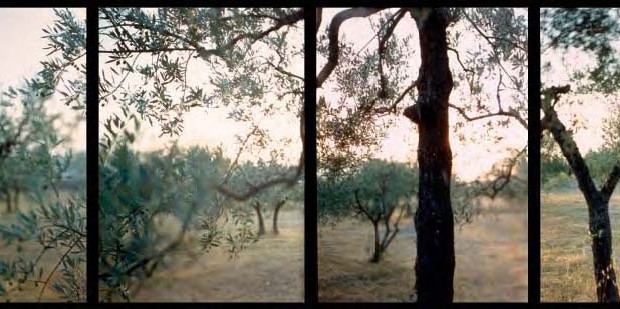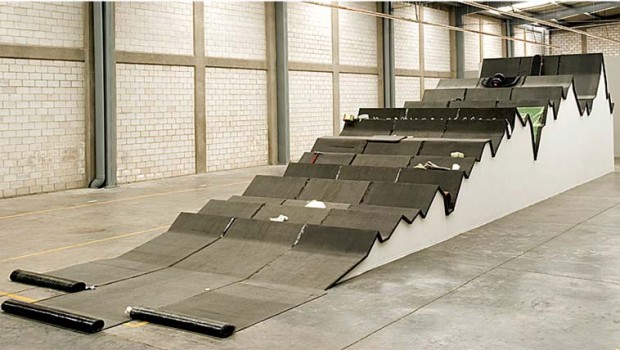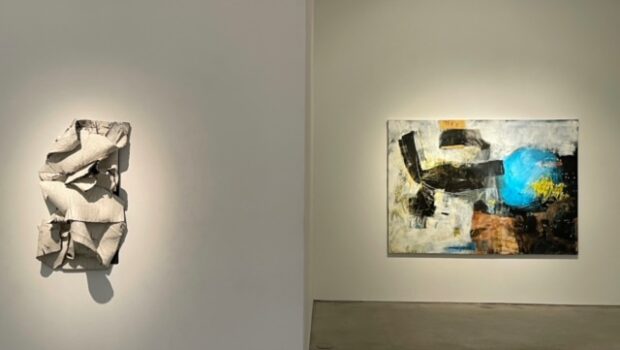Places of Longing: Gabriel Figueroa Flores
Lugares prometidos
Alberto Ruy Sánchez
Translated by Rhonda Buchanan
THE LIPS OF PARADISE
They say this arcade was built long ago by an exile from the desert who longed for its palm trees. He came from a legendary oasis where these are planted in rows, with the tips of their leaves touching each other. They create an enclave of curves that appear to soar, but actually support the trusses of the roof. When seen from a certain perspective, these columns of arches awaken the desire to approach, to penetrate, to discover what lies beyond their thresholds. This part of the story is familiar to any gardener, but what happened next has not been told: that desert man who built with stone and mortar the palm trees he could not have in his new land, had fallen in love with a woman of Mayan beauty, who surrendered her body to him, as if opening every door of her palace and ultimately revealing to him its most intimate secrets. The following day, the emigrant ordered the construction of a very unique arch, seemingly labial and dark, between the legs of his palms. Alluring promise of infi nite light. Glimpse of the entrance to a cherished body, which suddenly evoked for him another vision and another sensation of heaven.
SIMMERING FLIGHT
The mystery comes from the clouds. Not all of them. Those that seem normal become mired in the distance, grazing the mountains. They sink at times into the horizon. These others are more defined, whiter, and billowy, as if the skin of the sky had been pinched three times. A patch of clouds that someone crumpled in the palm of the hand before flinging it like useless paper into the blue void that now bears its stain.
These three fistfuls of clouds, these three eyes from out of nowhere that are squinting, suddenly give the impression they are peering down at us with curiosity. Their gaze lingers with amazement upon the remains of our fallen angel. His shattered face, little more than a melancholic profile. We do not know how he came to be condemned, what he did, or is about to do.
Along the shore of a dry sea, his body and hair have vanished among the dunes. Perhaps they retreated with them. Is this his hell? Or are there angels who only fly once they become sand in the wind?
THE STAIRCASE OF PLEASURE
They say it rose from the longing of a woman who wished to touch the stars. And that her lover was so captivated by her that he erected a thousand and one steps to make her happy. In reality she was not insane, although to others she seemed delirious. She was a woman of science who designed an observatory where the height of the staircases was important, not for being closer to the sky, but because from there she could see certain objects beyond the horizon and use them as points of reference for drawing lines and discovering the shifts between the earth and other heavenly bodies. Very difficult to comprehend for those who consider it madness to erect a staircase that does not lead anywhere. “Not even to a balcony,” they would say to her. “What is it for?” But she knew to respond: “You see where it leads only when you reach the end. Like so many things in life. And it exists to provide the immense pleasure of understanding.” But the very form of the seven celestial staircases was a stirring composition that thrilled the body, even that of its harshest critics, if they inadvertently let up their guard.
CONCENTRIC CIRCUSES
Within you my body grows, as does this building in the world. Like a vertical flower that pricks the sky. Day by day it rises, and those who dwell there compare its growth to an incessant blossoming of singing petals. Labial leaves that strive constantly to narrow their lofty view. How rare to find a building that acts like lovers caressing each other: walls enveloping walls like layers of concentric skin. Way up there, the building emits a tenuous sound, like a lethargic whistle. Like a forlorn sigh, say others. It is the struggle of the last walls opening to form a new circle, declare its builders, vanguard of a postfuture architecture that creates illusion with sensations, endless walls that people insist can be seen from a distance. Its growth is a mirage. It is a building turned city that sows in those who traverse its walls the certainty that together, all who abide within that universal circus may some day enter heaven. Circus, demagogy, hope: the ultimate polis, concentric and ephemeral.
Download Complete PDF / Descargar
LOS LABIOS DEL PARAÍSO
Dicen que esta arcada fue construida por un antiguo exiliado del desierto que tenía nostalgia de sus palmeras. Venía de un oasis legendario donde éstas se siembran en hileras y sus hojas se tocan en las puntas. Crean un ámbito de curvas que parecen volar, pero en realidad sostienen el tejido del techo. Líneas de arcos como umbrales que cuando se ven en perspectiva despiertan el anhelo de avanzar, de penetrar, de conocer lo que aguarda allá al fondo. Esta parte de la historia es conocida por cualquier jardinero. Pero lo que siguió no ha sido contado: aquel hombre del desierto, que construyó con piedra y argamasa las palmeras que no podía tener en sus nuevas tierras, se había enamorado de una mujer de rasgos mayas que le entregó su cuerpo como quien abre hasta la última puerta de su palacio y le revela sus más íntimos secretos. Al día siguiente el emigrado hizo construir entre las piernas de sus palmeras un arco muy distinto, casi labial y oscuro. Insinuante promesa de luz infinita. Imagen del umbral de un cuerpo amado que le hizo de pronto tener otra imagen y otra sensación del cielo.
EL VUELO HIRVIENTE
El misterio viene de las nubes. No de todas. Las que parecen normales se embarran al fondo rozando las montañas. Se hunden a ratos en el horizonte. Estas otras son más incisivas, más blancas y acolchonadas. Parecen tres pellizcos en la piel del cielo. Un nuberío que alguien arrugó en su palma antes de lanzarlo como papel inútil al vacío azul que ahora está ensuciando.
Estos tres puñados de nube, estos tres ojos de la nada haciendo bizcos, de pronto dan la impresión de asomarse a curiosear sobre nosotros. Miran detenidamente y con asombro los restos de nuestro ángel caído. El rostro roto, sin más sustancia que su perfil melancólico. No sabemos cómo fue condenado, qué hizo o está por hacer.
A la orilla de un mar seco, su cuerpo y su cabello han desaparecido entre las dunas. Tal vez se fugaron con ellas. ¿Es éste su infierno? ¿O hay ángeles que sólo vuelan hechos arena al viento?
LA ESCALERA DE PLACER
Dicen que surgió del anhelo de una mujer que deseaba tocar las estrellas. Y que su amado estaba tan trastornado que le construyó mil y un escalones para hacerla feliz. En realidad ella no estaba loca, aunque para los otros pareciera delirante. Era una mujer de ciencia que planeó un observatorio donde la altura de las escaleras era importante, pero no por estar más cerca del cielo, sino porque así alcanzaba a mirar ciertos objetos más allá del horizonte y los podía usar como referencias para trazar líneas y descubrir los desplazamientos de la tierra con respecto a otros astros. Muy difícil de entender para quienes no dejan de pensar que es una locura construir una escalera que no conduce a alguna parte. “Ni siquiera hacia un balcón, le decían. ¿Para qué sirve?” Pero ella sabía responder: “A lo que conduce sólo se ve cuando se llega. Como tantas cosas en la vida. Y sirve para darse el inmenso placer de comprender”. Aunque la forma misma de las siete escaleras celestiales era una composición inquietante que alegraba al cuerpo, incluyendo al de los más rigurosamente críticos, si en un descuido se lo permitían.
CIRCOS CONCÉNTRICOS
En ti crece mi cuerpo; y este edifi cio en el mundo. Como una flor vertical que inquieta al cielo. Día a día se levanta y, en la boca de quienes lo habitan, su crecimiento se compara a un constante abrir de pétalos que cantan. Hojas labiales que se esfuerzan por adelgazar infinitamente su alta perspectiva. Es raro un edificio que se comporta como personas amándose: convirtiéndose en piel concéntrica unos de otros. Allá a lo lejos, arriba, el edificio lanza un sonido delgado, como un silbato cansado. Como un suspiro triste, dicen otros. Es el esfuerzo de los últimos muros que se abren para formar su nuevo círculo, afi rman sus constructores, vanguardia de una arquitectura postfutura que construye ilusión con sensaciones, muros sin fin que la gente asegura que a lo lejos alcanza a ver. Su crecimiento es un espejismo. Es un edificio ciudad que siembra en quienes cruzan sus muros la certeza de que juntos, todos los seres contenidos en el circo universal de allá adentro, pueden algún día acceder al cielo. Circo, demagogia, esperanza: la polis esencial, concéntrica y fugaz.










